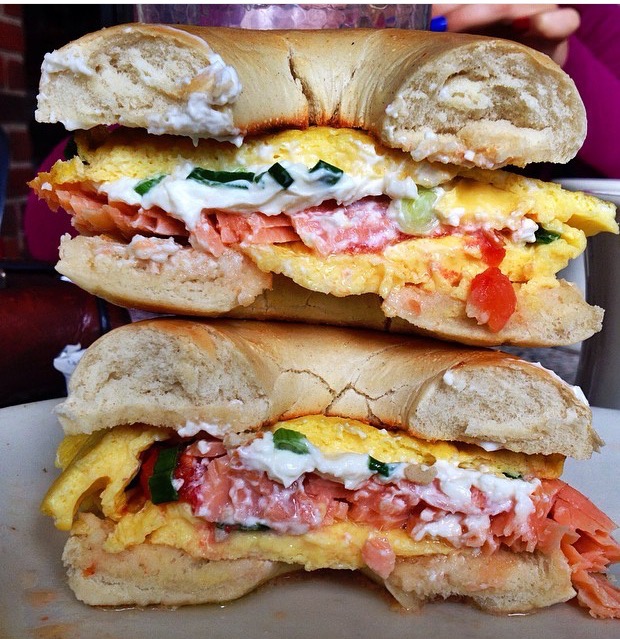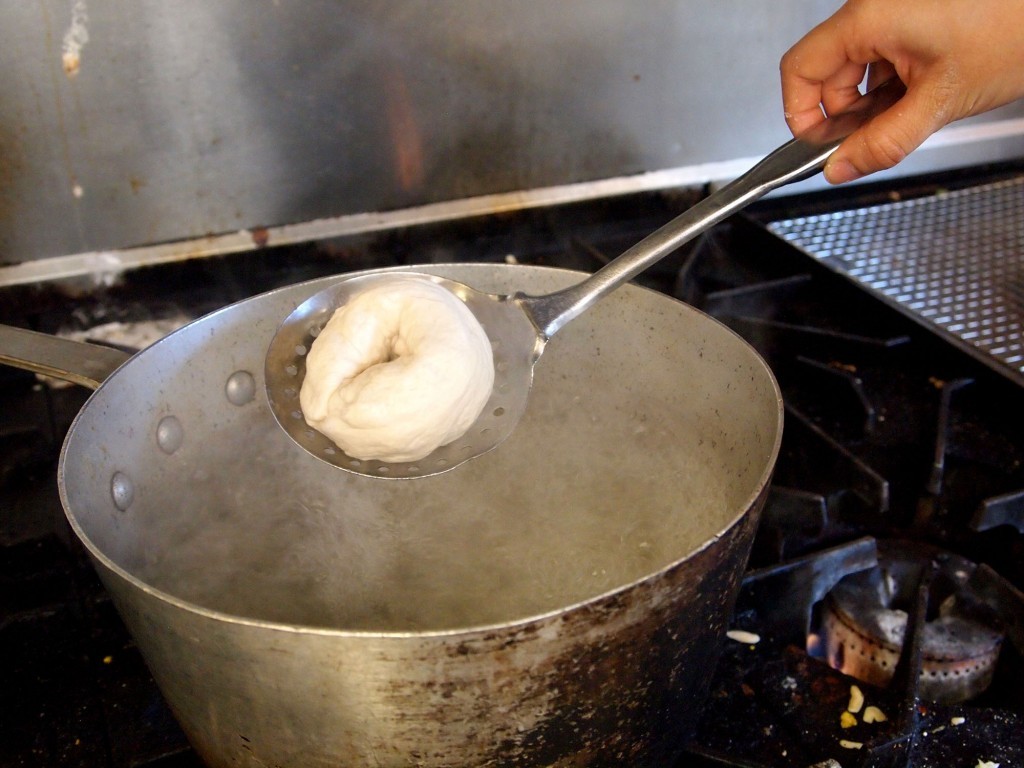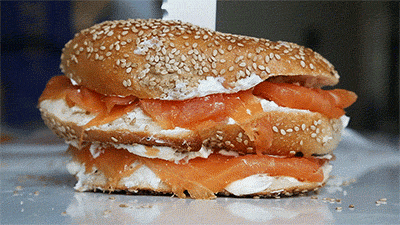Bagels are as New York as the Empire State building, dirty water dogs, and hurried people with no fear of cursing one another out. They were created in New York and have been around since immigrants arrived on Ellis Island, homesick and hungry.
As someone who grew up on Long Island with fresh, chewy bagels as standard breakfast fare, a bite of a good everything bagel with cream cheese and lox makes me feel right at home even if I’m thousands of miles away.
The problem is it’s a lot harder to get a decent bagel outside NY than it should be, considering mounting evidence against the myth that New York’s water is responsible for its legendary bagels.
So wait, it’s not the watah?

Photo by Sara Tane
I’ll admit, I hailed it was the water, which comes from the Catskills in upstate New York, that makes New York bagels so good up until doing serious research on the matter. But the myth has been busted and water plays a much smaller role than people think.
The idea is that New York’s water has low concentrations of calcium and magnesium, making it really soft. Harder water strengthens the gluten in the dough, resulting in tough bagels (no bueño).
But the American Chemical Society says water actually has only a small effect on the outcome of the bagel and America’s Test Kitchen found no difference in bagels made with Brooklyn or even softer Massachusetts water. Sorry, but states can no longer use the mineral content of their water as an excuse for lame bagels.

GIF courtesy of giphy.com
Ferment that ish

Photo by Caroline Rimmer
The two most critical steps for a bangin’ bagel are letting the bagels ferment (rise slightly at cool temperatures) at least overnight and briefly boiling them before baking.
Melissa Weller of Sadelle’s, a Manhattan restaurant/bagel store hailed for its hol(e)y goods, recently went through her bagel-making process on Lucky Peach. Weller says that after they finish making the dough, she and her crew quickly roll out the bagels and pop them into the fridge where they sit overnight.
This slow fermentation process allows chemical and biological processes to take place, enhancing the flavor of the bagels. The key is to keep the bagels cool from when they’re formed until they get boiled because at a temperature much above 40°F, they over-proof and will bake fluffy and doughy instead of chewy.
Drop it like it’s hot (into the boiler)

Photo by Laura Lim
Letting the bagels sit in boiling water for a short time before baking is a commonly overlooked step that is critical for flavorful, chewy bagels. According to Chef Richard Coppedge of the Culinary Institute of America, boiling them anywhere from 30 seconds to 3 minutes is what makes bagels glossy and crunchy on the outside while keeping the inside dense and chewy.
As the American Chemical Society explains it, boiling “pre-gelatinizes the starch in the dough, locking the liquid inside of it and expanding the interior.” This is the step that makes a bagel a bagel. Without it, you’ll get a texture more like bread and a whole lot of sad bagel eaters.
The good news

GIF courtesy of giphy.com
While New York is the bagel MVP, great bagels can come from anywhere. Dan Graf of Baron Baking in Oakland California is cranking out New York-style bagels that are getting rave reviews. UNC Chapel Hill’s Alpine Bagel Cafe is doing the bagel business right by chilling their bagels for almost 24 hours and never skipping the boil (which is probably why their lines are never-ending during the lunch rush).
But if there’s nowhere nearby that can satisfy your bagel cravings, you can always make them yourself like the beast in the kitchen you are.
Or, if you’re feeling creative, try making Spoon BU’s quick Everything Bagel Donut.


